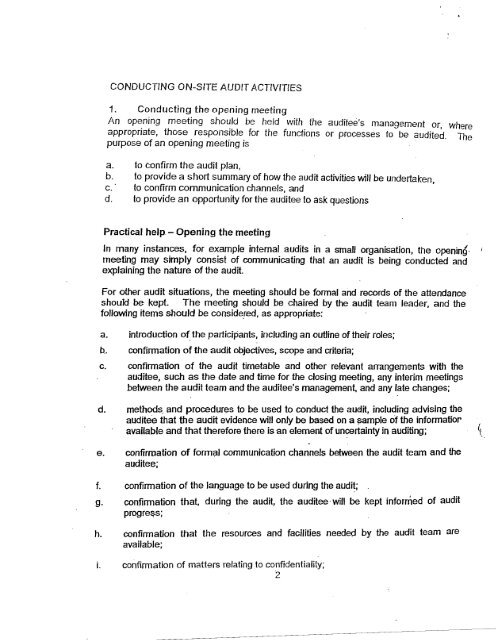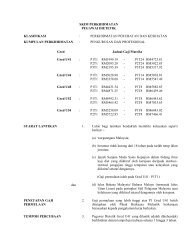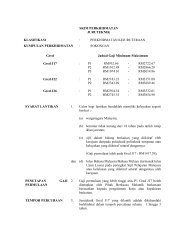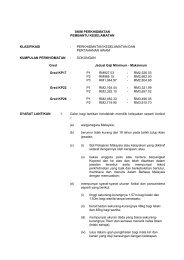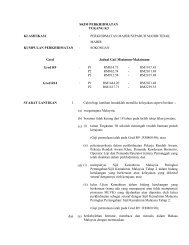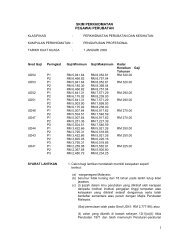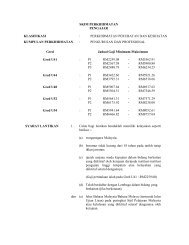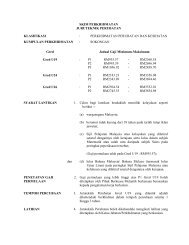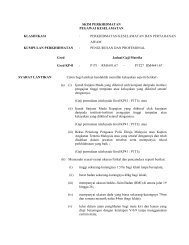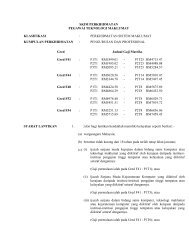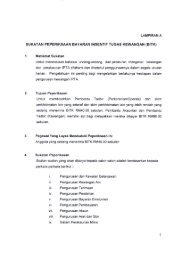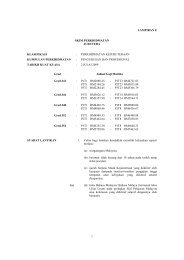PRINCIPLES OF AUDITING Auditing is characterised by reliance on ...
PRINCIPLES OF AUDITING Auditing is characterised by reliance on ...
PRINCIPLES OF AUDITING Auditing is characterised by reliance on ...
- No tags were found...
You also want an ePaper? Increase the reach of your titles
YUMPU automatically turns print PDFs into web optimized ePapers that Google loves.
CONDUCTING ON-SrTE AUDIT ACTIVITIES1. C<strong>on</strong>ducting the opening meetingAn op~ning meeting sho~ld be held with the auditee's management or, whereappropnate, those resp<strong>on</strong>sIble for the functi<strong>on</strong>s or processes to be audited. Thepurpose of an opening meeting <str<strong>on</strong>g>is</str<strong>on</strong>g> .a. to c<strong>on</strong>firm the audit plan,b. to provide a short summary of how the audit activities will be undertakenc. to c<strong>on</strong>firm communicati<strong>on</strong> channels, and 'd. to provide an opportunity for the auditee to ask questi<strong>on</strong>sPractical help. - Opening the meetingIn many instances, for example internal audits in a small organ<str<strong>on</strong>g>is</str<strong>on</strong>g>ati<strong>on</strong>, the opening'meeting may simply c<strong>on</strong>s<str<strong>on</strong>g>is</str<strong>on</strong>g>t of communicating that an audit <str<strong>on</strong>g>is</str<strong>on</strong>g> being c<strong>on</strong>ducted andexplaining the nature of the audit.For other audit situati<strong>on</strong>s, the meeting should be formal and records of the attendanceshould be kept. The meeting should be chaired <str<strong>on</strong>g>by</str<strong>on</strong>g> the audit team leader, and thefollowing items should be c<strong>on</strong>sidered, as appropriate:a. introducti<strong>on</strong> ot. the participants, including an outline of their roles;b..c<strong>on</strong>firmati<strong>on</strong> of the audit objectives, scope and criteria;c. c<strong>on</strong>firmati<strong>on</strong> of the audit timetable and other relevant arrangements with theaUditee, such as the date and time for the closing meeting, any interim meetingsbetween the audit team and the auditee's management. and any late changes;d. methods. and procedures to be used to c<strong>on</strong>duct the audit, including adv<str<strong>on</strong>g>is</str<strong>on</strong>g>ing theaUditee that the audit evidence will <strong>on</strong>ly be based <strong>on</strong> a ~ample of the informatioravailable ana that therefore there <str<strong>on</strong>g>is</str<strong>on</strong>g> an element of uncertainty in auditing; ~:e. c<strong>on</strong>firmati<strong>on</strong> of formcll communicati<strong>on</strong> channels between the audit team and theauditee;f. c<strong>on</strong>firmati<strong>on</strong> of the language to be used during the aUdi~;g. c<strong>on</strong>firmati<strong>on</strong> that, during the audit, the auditee·will be kept informed of auditprogre&s;h. c<strong>on</strong>firmati<strong>on</strong> that the resources and facilities needed <str<strong>on</strong>g>by</str<strong>on</strong>g> the audit team areavailable;i. c<strong>on</strong>firmati<strong>on</strong> of matters relating to c<strong>on</strong>fidentiality;2


